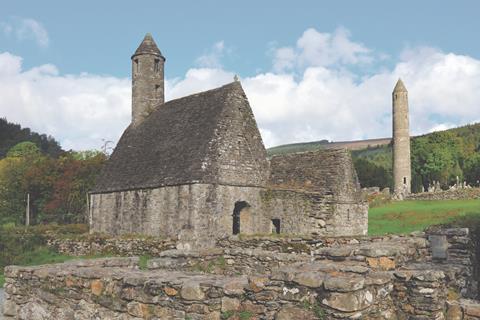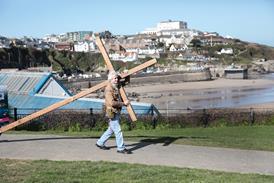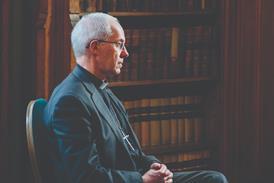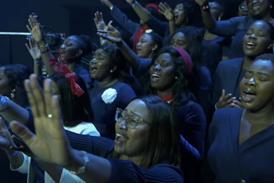A lot of what you’ve been told about Celtic Christianity is plain wrong, argues Nick Page. He sets the record straight

Celtic Christianity is big. Publishers pump out volumes of Celtic blessings and liturgies that are beautiful, inspirational and rightly concerned for the environment. But it bears the same relation to the Christianity of Columba and his followers as a cockapoo does to a wolf; they’re broadly the same species, but much more domesticated. Early British monasticism was not full of nature-loving monks who spent their evenings colouring in Celtic knots. It was brutal, wild, unyielding and, sometimes, not even very obviously Christian.
So, what can we learn from it today?
1. You can be individual and together
It’s often implied that the ‘Celtic Church’ was a unique expression of native Christianity which was eventually crushed by nasty, authoritarian Rome. This is partially true at best. As far as we can tell, each monastery followed its own rules. But to see it as independent of – or even opposed to – mainstream Christianity is misleading. There was a hierarchy. The Irish and British saints prayed in Latin, just as they did in Rome. They used similar prayers for Mass, baptism and anointing of the sick. The takeaway? You can have local expressions of Christianity and still be connected with the mainstream of faith.
2. Sometimes it’s good to go to extremes
The early British monks went to wild places. But they didn’t do this because they loved nature or craved adventure, they did it because they believed that following Christ meant sacrificing everything – status, comfort, possessions or even a roof! The pursuit of holiness was an extreme act. Should our faith be something less comfortable, more visceral?
3. And sometimes it’s bad…
When I read some of the lives of the monks, I don’t so much think: Oh, what a great saint! as: Mate, you really need therapy! Monks who broke the rules faced punishments such as rolling around in nettles or spending the night standing in freezing water. Effectively this is torture, sadism, masochism - or all three. We can learn something from their self-discipline, but only if we temper it with love and forgiveness.
4. Optics matter
The harshness of their lives was not just about individual purity. It also sent a message. They lived in a tribal, warrior culture, so felt they had to match, or even out-do, the world around them. The toughness of their life sent a message: “Come and have a go if you think you’re holy enough.” What are our optics today? How are we challenging our culture?
5. The world is beautiful – and terrible
Out of northern British monasticism came art of astonishing power and beauty. This often celebrated the natural world, but they were not eco-warriors; they were people who knew nature is both beautiful and terrifying. Their writings connect us with the natural world, which should lead to wonder, but also reverence, awe and, most importantly, humility.
6. You don’t have to be validated by history
New religious movements almost always have parenting issues. They seek approval from the past. So-called ‘Celtic Christianity’ emerged because people craved an expression of faith that was more poetic, more centred around creation and rooted in the landscape of the British Isles.
This has been a blessing to the Church, but it is a modern construct; a reworking of the ancient faith, not a rediscovery. That is OK. But there’s no need to invent ancient traditions to back those up, or project our ideas back in time.
Look to God, take the faith seriously, but do it your way. Learn from the past, but don’t worship it. If your expression of worship honours God, helps people to be Christ-like and gives space for the Spirit, then great. If you do that with a bit of poetry and a bloke on a tin-whistle, well, good for you. Just don’t tell me it’s Celtic.





































No comments yet